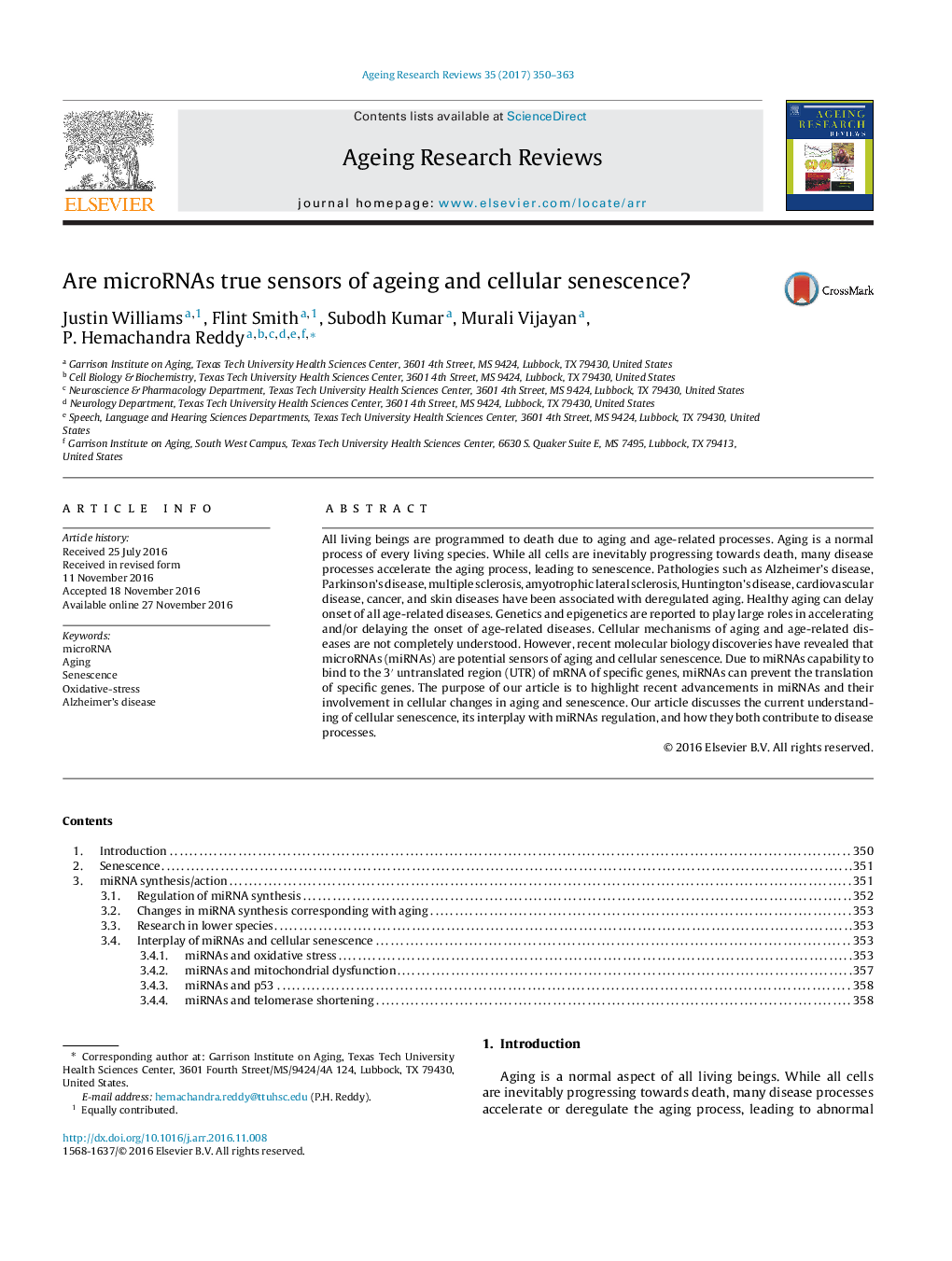| Article ID | Journal | Published Year | Pages | File Type |
|---|---|---|---|---|
| 5500736 | Ageing Research Reviews | 2017 | 14 Pages |
Abstract
All living beings are programmed to death due to aging and age-related processes. Aging is a normal process of every living species. While all cells are inevitably progressing towards death, many disease processes accelerate the aging process, leading to senescence. Pathologies such as Alzheimer's disease, Parkinson's disease, multiple sclerosis, amyotrophic lateral sclerosis, Huntington's disease, cardiovascular disease, cancer, and skin diseases have been associated with deregulated aging. Healthy aging can delay onset of all age-related diseases. Genetics and epigenetics are reported to play large roles in accelerating and/or delaying the onset of age-related diseases. Cellular mechanisms of aging and age-related diseases are not completely understood. However, recent molecular biology discoveries have revealed that microRNAs (miRNAs) are potential sensors of aging and cellular senescence. Due to miRNAs capability to bind to the 3â² untranslated region (UTR) of mRNA of specific genes, miRNAs can prevent the translation of specific genes. The purpose of our article is to highlight recent advancements in miRNAs and their involvement in cellular changes in aging and senescence. Our article discusses the current understanding of cellular senescence, its interplay with miRNAs regulation, and how they both contribute to disease processes.
Related Topics
Life Sciences
Biochemistry, Genetics and Molecular Biology
Ageing
Authors
Justin Williams, Flint Smith, Subodh Kumar, Murali Vijayan, P. Hemachandra Reddy,
